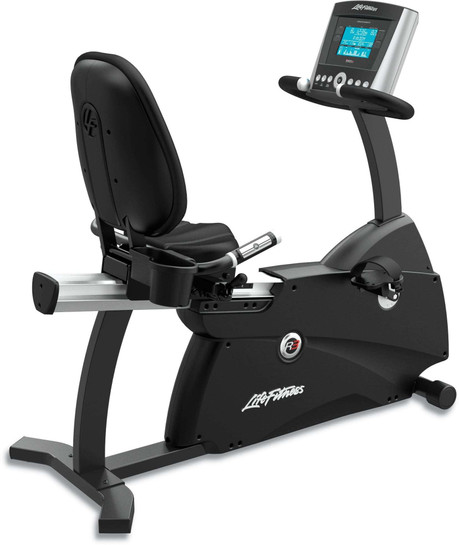Recumbent VS Spinning Bike
When it comes to choosing the right exercise equipment, the options can be overwhelming. Two popular choices for indoor cycling are recumbent bikes and spinning bikes. These bikes offer different features and benefits, making it important to understand the differences between them before making a decision. In this article, we will delve into the pros and cons of both recumbent and spinning bikes, compare their workout intensities and muscle engagement, and discuss their effectiveness for weight loss, cardiovascular health, and joint health. By the end, you'll have a clear understanding of which bike suits your fitness goals.
Pros and cons of recumbent bikes
Recumbent bikes, characterized by their reclined seating position and back support, offer a comfortable and low-impact workout. One of the major advantages of recumbent bikes is the reduced strain on the joints and lower back. The ergonomic design of these bikes ensures that the rider's weight is evenly distributed, minimizing the risk of injuries. Additionally, the wide and cushioned seats provide excellent support, making them suitable for individuals with back pain or joint issues.
However, recumbent bikes may not be as effective in terms of calorie burn and cardiovascular conditioning compared to spinning bikes. The reclined position limits the engagement of core muscles, resulting in a lower overall workout intensity. If your main goal is to push your limits and increase your endurance, a recumbent bike may not be the ideal choice. Nevertheless, if you prioritize comfort and joint health, a recumbent bike could be a perfect fit for you.
Pros and cons of spinning bikes
Spinning bikes, also known as indoor cycling bikes, are designed to simulate the experience of outdoor cycling. These bikes offer a challenging and high-intensity workout that engages multiple muscle groups. The upright position on a spinning bike engages the core muscles, upper body, and lower body, resulting in a full-body workout. Additionally, spinning bikes allow for more variety in terms of workout routines, including standing climbs and intervals.
However, the intense nature of spinning workouts may not be suitable for everyone. The high impact and fast-paced nature of spinning can put strain on the joints and lower back, making it important to use proper form and gradually increase the intensity. If you have any pre-existing joint issues or injuries, spinning bikes may not be the best choice for you. Despite these considerations, if you're looking for a challenging and efficient workout that boosts your cardiovascular fitness, a spinning bike could be the perfect option.
Comparison of recumbent and spinning bikes in terms of workout intensity
When comparing the workout intensity of recumbent and spinning bikes, it's important to consider your fitness goals and preferences. Recumbent bikes offer a low-impact workout that is gentle on the joints and lower back. These bikes are ideal for individuals who prefer a more relaxed exercise experience or have specific health concerns. On the other hand, spinning bikes provide a high-intensity workout that elevates the heart rate and challenges the cardiovascular system. If you're looking to improve your endurance, burn calories, and increase your fitness level, spinning bikes are a great choice.
Comparison of recumbent and spinning bikes in terms of muscle engagement
In terms of muscle engagement, spinning bikes offer a more comprehensive workout compared to recumbent bikes. The upright position on a spinning bike engages the core muscles, including the abdominals and lower back. Additionally, the pedaling motion targets the quadriceps, hamstrings, and calves, resulting in a well-rounded leg workout. On the other hand, recumbent bikes primarily focus on the lower body muscles, such as the quadriceps and hamstrings. The reclined position limits the engagement of core muscles, making it less effective for overall muscle strengthening. If you're looking for a full-body workout that targets multiple muscle groups, spinning bikes are the way to go.
Recumbent vs. spinning bikes: Which one is better for weight loss?
When it comes to weight loss, both recumbent and spinning bikes can be effective tools. However, spinning bikes have an advantage in terms of calorie burn and overall intensity. The high-intensity interval training (HIIT) workouts commonly performed on spinning bikes can result in a significant calorie expenditure and increased metabolism even after the workout. On the other hand, recumbent bikes provide a more moderate intensity workout that may not burn as many calories. If weight loss is your primary goal, incorporating spinning workouts into your routine can help you achieve faster results.
Recumbent vs. spinning bikes: Which one is better for cardiovascular health?
Both recumbent and spinning bikes offer cardiovascular benefits, but spinning bikes have an edge in terms of cardiovascular conditioning. The intense and fast-paced nature of spinning workouts elevates the heart rate, improving cardiovascular endurance and stamina. The HIIT workouts commonly performed on spinning bikes are particularly effective in increasing cardiovascular fitness levels. However, if you have certain cardiovascular conditions or prefer a lower-intensity workout, recumbent bikes can still provide cardiovascular benefits while being gentler on the body.
Recumbent vs. spinning bikes: Which one is better for joint health?
For individuals with joint concerns or injuries, recumbent bikes are generally a safer option. The reclined position and back support of recumbent bikes reduce the strain on the joints, making them suitable for individuals with arthritis, knee issues, or back pain. Spinning bikes, on the other hand, can put more stress on the joints, especially if proper form and technique are not followed. If you have any joint issues or are recovering from an injury, it's recommended to consult with a healthcare professional before incorporating spinning workouts into your routine.
Cost comparison of recumbent and spinning bikes
When it comes to cost, there is a wide range of options available for both recumbent and spinning bikes. The price of recumbent bikes can vary depending on the features and quality of the bike. Generally, recumbent bikes tend to be more expensive than spinning bikes due to their ergonomic design and added comfort features. On the other hand, spinning bikes come in a variety of price ranges, including more affordable options for home use. It's important to consider your budget and the features that are important to you when making a decision.
Conclusion: Choosing the right bike for your fitness goals
In the ultimate showdown between recumbent and spinning bikes, there is no clear winner. The choice between these two bikes ultimately depends on your fitness goals, preferences, and any specific health concerns you may have. Recumbent bikes offer a comfortable and low-impact workout, making them ideal for individuals with joint issues or back pain. Spinning bikes provide a high-intensity and full-body workout that is great for individuals looking to improve their cardiovascular fitness and burn calories. Consider your goals, consult with a fitness professional if needed, and choose the bike that aligns with your needs. Whether you choose a recumbent bike or a spinning bike, remember that consistency and proper form are key to achieving your fitness goals.
CTA: Ready to take your indoor cycling to the next level? Explore our selection of recumbent and spinning bikes to find the perfect fit for your fitness journey.


